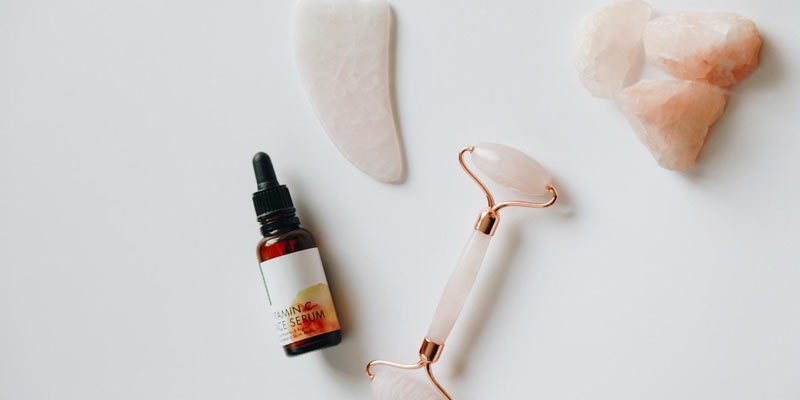Treatment and Preventions for Dyshidrotic Eczema
Dec 09, 2023
Eczema, known as dyshidrotic eczema, is frequent. Pompholyx, which means "bubble" in Greek, is the medical term for this illness. Small blisters appear on the palms, toes, fingers, or soles of the feet due to this condition. Small, itchy blisters appear on the palms and fingers of people with dyshidrotic eczema.
Dyshidrosis, pompholyx, vesicular eczema, foot-and-hand eczema, or palmoplantar eczema are all terms your doctor might use to describe your condition.
Because there's no cure, these blisters will appear and disappear over time. You can, however, treat them with medication, moisturizers, and excellent hygiene. Once you reach middle age, they may begin to diminish. And if it's a little case, you may not need any treatment.
Symptoms

This type of eczema generates small, fluid blisters that can be unpleasant and uncomfortable. Unlike other forms of blisters, this one has a distinct look.
You may notice symptoms on your hands, fingers, soles, or toes if you have a skin condition. Itching, a burning sensation, and sweating are all possible symptoms of blisters.
Blisters from dyshidrotic eczema usually disappear in 3–4 weeks. The skin typically becomes dry, cracked, or peeled as the wound begins to heal.
The blisters can be extremely large and spread to the backs of the hands, feet, and limbs in severe cases. It is not possible to spread the disease to other people.
Eczema areas on light skin are more likely to appear red. As eczema affects people of color, it might result in darker brown, purple, or grey areas on the skin. Swollen, hot, itchy, dry, or scaly skin may be found in the affected areas. African-Americans may be more susceptible to skin dryness.
If you scratch the blisters a lot, they may become infected. You may notice these symptoms if you are infected:
- Swelling
- Pain
- Crusting
- Blisters swelled with pus
Causes of Dyshidrotic Eczema
Dyshidrotic eczema is a mystery to doctors. Adults between the ages of 20 and 40 are most at risk, and women are twice as likely as men to suffer from it. A family history of dyshidrotic or other eczema increases your risk of contracting it.
Diagnosis of dyshidrotic eczema might be complicated by factors such as:
- Stress
- Contact with metals like cobalt, nickel, salts on the job, chromium, or via things like costume jewelry is a possible source of exposure.
- hands or feet that are damp or drenched
- Whether that is hot and humid
- A person who is infected with HIV
- A few immune-suppressing medications (immunoglobulin)
- allergic reactions caused by the changing of the seasons
In addition to dyshidrotic eczema, almost half of those who suffer from it also have contact dermatitis or atopic dermatitis. In this case, the disease isn't infectious. You can't get it from someone who has it since they can't spread it to you.
Treatment

A person with dyshidrotic eczema can control their illness with the help of a variety of treatments.
Dyshidrotic eczema treatments include:
- The use of over-the-counter corticosteroid creams to alleviate skin irritation and inflammation. These can also be ordered online.
- We are reducing itching with the use of antihistamines.
- Prescription or over-the-counter anti-itch creams having pramoxine can be purchased online or in stores.
- Blisters are being drained. A doctor should do this to prevent the spread of hazardous bacteria.
- Dermatologists prescribe prescription corticosteroids
- We are reducing inflammation by taking oral steroids such as prednisone.
- You are invoking the power of light. Dyshidrotic eczema may be less common if exposed to ultraviolet light.
Dyshidrotic eczema is more common in spring and summer, according to the National Health Service (NHS) in the United Kingdom. Sweat may be a trigger. Treatment for excessive sweating using botulinum toxin injections, generally known as botox, has been approved by the Food and Drug Administration (FDA).
Dyshidrotic eczema flare-ups may be reduced by reducing the quantity of sweating a person does. An individual should make an appointment with a dermatologist to learn more about their treatment options.
Home Remedies
Applying 15 minutes of ice compresses to dried blisters may alleviate itching. After that, use a lotion or medicinal cream to soothe your skin. Skin infections can be prevented by washing the skin often.
Moisturizing creams can be used on the skin after washing one's hands or taking a bath to keep it from drying. Ointments like petroleum jelly are more effective in relieving itchy skin than creams and lotions.
Prevention
Eczema outbreaks can't always be prevented, but following a healthy skin care regimen can reduce the likelihood of recurrences.
Dyshidrotic eczema can be prevented by:
- I apply moisturizer immediately after showering or bathing. Moisture loss and severe dryness can be prevented by doing this.
- Cotton and other natural fibers, such as wool, should be avoided, as they irritate the skin.
- This can cause the skin to crack and aggravate the illness if scratched or itched.
- They were eliminating or reducing the presence of allergens, such as pet dander and pollen. Allergic reactions may be lessened if pets are bathed in dander-reducing shampoos. You may buy these shampoos on the internet.
- Using a humidifier is a good idea when the weather is chilly and dry. This helps to keep the skin from drying out by increasing the amount of moisture in the air. Online retailers sell humidifiers.





